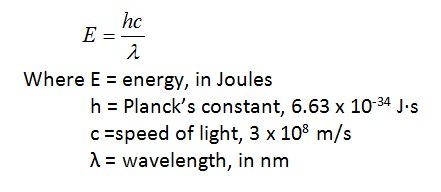[cs_content][cs_section parallax=”false” separator_top_type=”none” separator_top_height=”50px” separator_top_angle_point=”50″ separator_bottom_type=”none” separator_bottom_height=”50px” separator_bottom_angle_point=”50″ style=”margin: 0px;padding: 45px 0px;”][cs_row inner_container=”true” marginless_columns=”false” style=”margin: 0px auto;padding: 0px;”][cs_column fade=”false” fade_animation=”in” fade_animation_offset=”45px” fade_duration=”750″ type=”1/1″ style=”padding: 0px;”][cs_text]Forensic Chemistry > 6. All elements have identifiable emission spectra and this can be used to identify trace elements > Excited Atoms in The Gas Phase >[/cs_text][cs_text style=”color: #800000;font-family: “Oxygen”,sans-serif;”]Explain why excited atoms in the gas phase emit or absorb only certain wavelengths of light[/cs_text][cs_text]Electrons can only absorb or emit exact amounts of energy that allow them to make full jumps. This energy is known to be quantised, existing in light packets called photons.[/cs_text][cs_text] [/cs_text][cs_text]According to Planck’s formula, absorbed or emitted energy is inversely proportional to wavelength. Therefore, electrons can only emit or absorb specific wavelengths.[/cs_text][/cs_column][/cs_row][/cs_section][/cs_content]
[/cs_text][cs_text]According to Planck’s formula, absorbed or emitted energy is inversely proportional to wavelength. Therefore, electrons can only emit or absorb specific wavelengths.[/cs_text][/cs_column][/cs_row][/cs_section][/cs_content]